If your hamster has a nosebleed, it can be a bit alarming. It is important to determine the cause of the nosebleed so that you can take the appropriate steps to treat it.
In this blog post, we will discuss some of the common causes of nose bleeds in hamsters and what you can do about them.
Key Takeaway
- A hamster’s nose may bleed due to several reasons including dry and hot air conditions, injuries, infections, tumors, allergic reactions, or blood clotting problems, as well as potential kidney or liver failure in older hamsters.
- If your hamster’s nose is bleeding, it’s crucial to apply gentle pressure with a clean cloth or cotton ball to the area, visit a vet for a proper diagnosis and treatment, and ensure a safe, non-irritating environment for your hamster to prevent future incidents.
- While you can perform initial care for your hamster’s nosebleed at home by applying gentle pressure with a clean cloth, using safe products like UMF Manuka Honey or Thyme Tea for cleaning the wounds, and offering soft food like water-soaked pellets, it’s essential to seek professional veterinary help promptly to diagnose and treat potential underlying health issues.
Why Is My Hamster’s Nose Bleeding?

Hamsters are one of the most popular small pets in the world. They’re adorable, and they make great companions.
However, one thing that can be a cause for concern for hamster owners is when their pet experiences a nose bleed.
Here are the most common reasons why your hamster’s nose is bleeding:
1. Bleeding caused by trauma
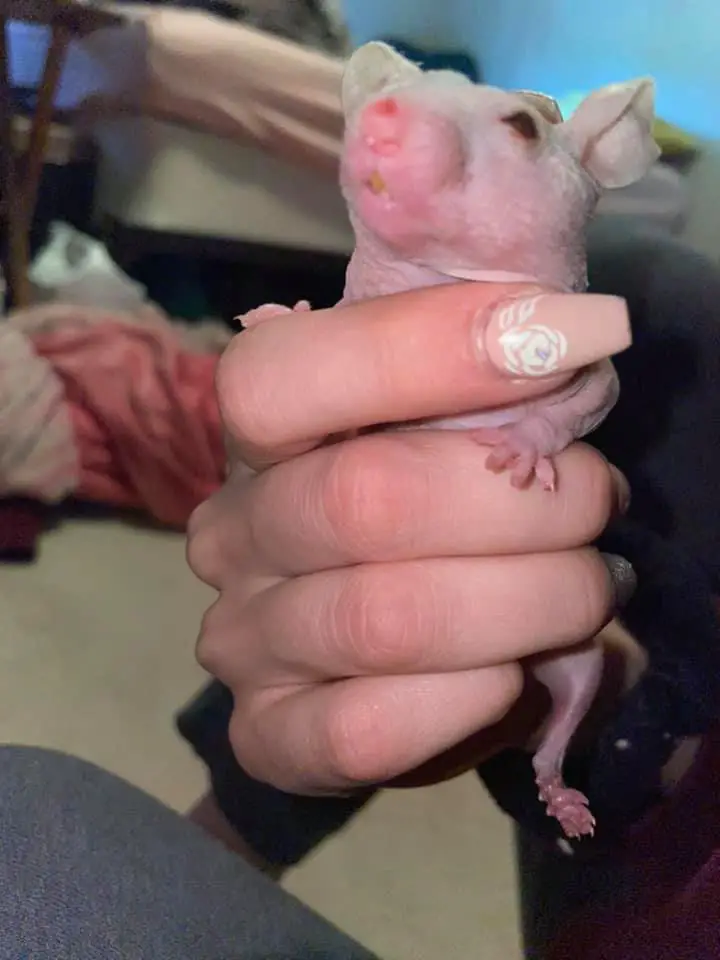
Trauma, such as a fall or a bump to the nose, can cause a nosebleed in hamsters by rupturing the small blood vessels inside their nasal passages.
Hamsters can hurt themselves while playing on their wheel and other toys. So, before you go on with the list, check the toys in your hamster’s enclosure and check for blood. If they hit themselves on some of the toys, there would be tiny blood drops on that toy.
Hamsters have fragile skin and when they bump into things, it can cause small cuts that bleed. If your hamster has a nosebleed, the first thing you should do is apply pressure to the bleed with a clean cloth or cotton ball.
Once the bleeding has stopped, you can apply a small amount of petroleum jelly to the area to help protect it from further injury. If the nosebleed does not stop within a few minutes, or if it appears to be getting worse, you should take your hamster to the vet for further treatment.
2. Red mucus that resembles blood
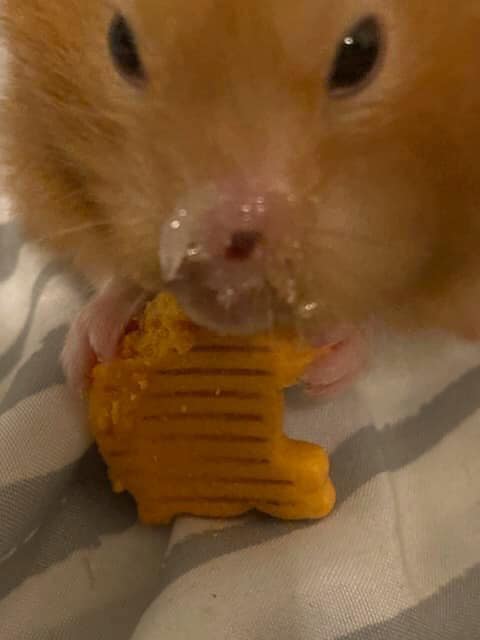
Red mucus that resembles blood in a hamster’s nose can be a sign of a respiratory infection or allergy, which can lead to nosebleeds due to inflammation and irritation of the nasal passages.
This increased blood flow may be a result of inflammation or an infection. In some cases, the red mucus may also be caused by a reaction to certain foods or chemicals.
You should look into the type of bedding you are using. There are oils in pine and cedar that are triggering respiratory trouble in hamsters that leads to red mucus from their noses that looks like blood. So, if you have pine or cedar bedding, switch to aspen, or corncob.
3. Bacterial infections of the nasal cavity
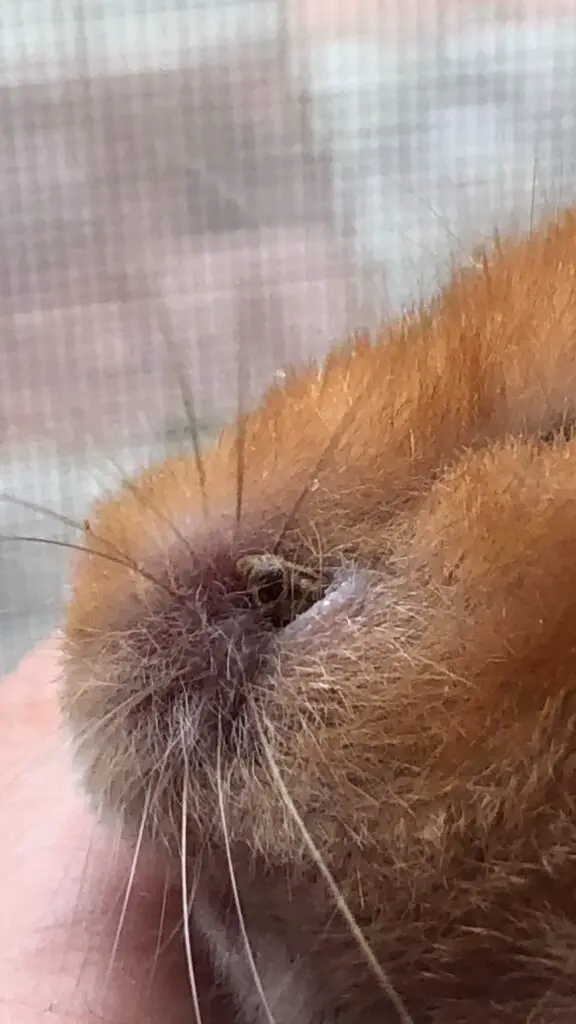
Bacterial infections of the nasal cavity in hamsters can cause nosebleeds by leading to inflammation and damage to the nasal lining, resulting in ruptured blood vessels and bleeding.
Moreover, bacterial infections of the nasal cavity are a serious health concern for hamsters. These infections can cause a variety of symptoms, including sneezing, bloody discharge from the nose, and difficulty breathing. Left untreated, a bacterial infection can lead to serious complications, including pneumonia.
Prevention is the best way to protect your hamster from a bacterial infection, and regular cleaning of the cage and avoidance of other sick animals is critical.
If you suspect that your hamster has a bacterial infection, consult your veterinarian immediately. Early treatment is essential to avoid serious complications.
4. The air is too dry and hot
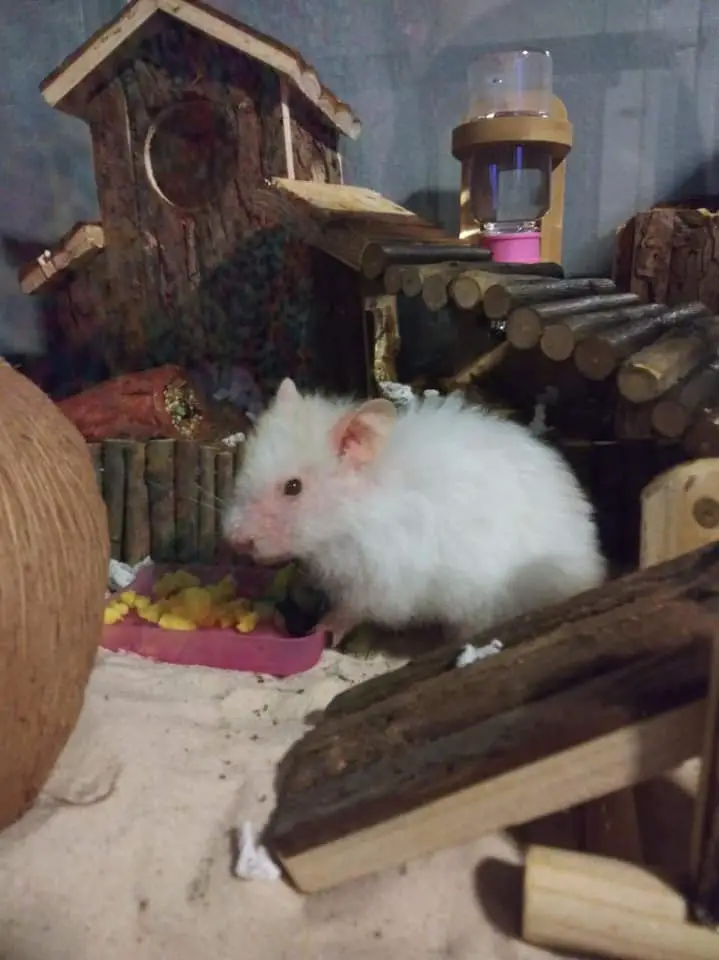
Exposure to dry and hot air can cause nosebleeds in hamsters by drying out and irritating the nasal passages, leading to cracking and bleeding of the delicate tissues inside.
If you live in an area with a climate that is prone to dry, hot weather, it’s important to take steps to keep your hamster’s environment cool and moist.
This may involve using a humidifier or placing a wet towel over the cage. In addition, make sure to provide your hamster with ample water to drink.
By taking these precautions, you can help prevent nosebleeds and other health problems caused by dry, hot air.
5. Allergy
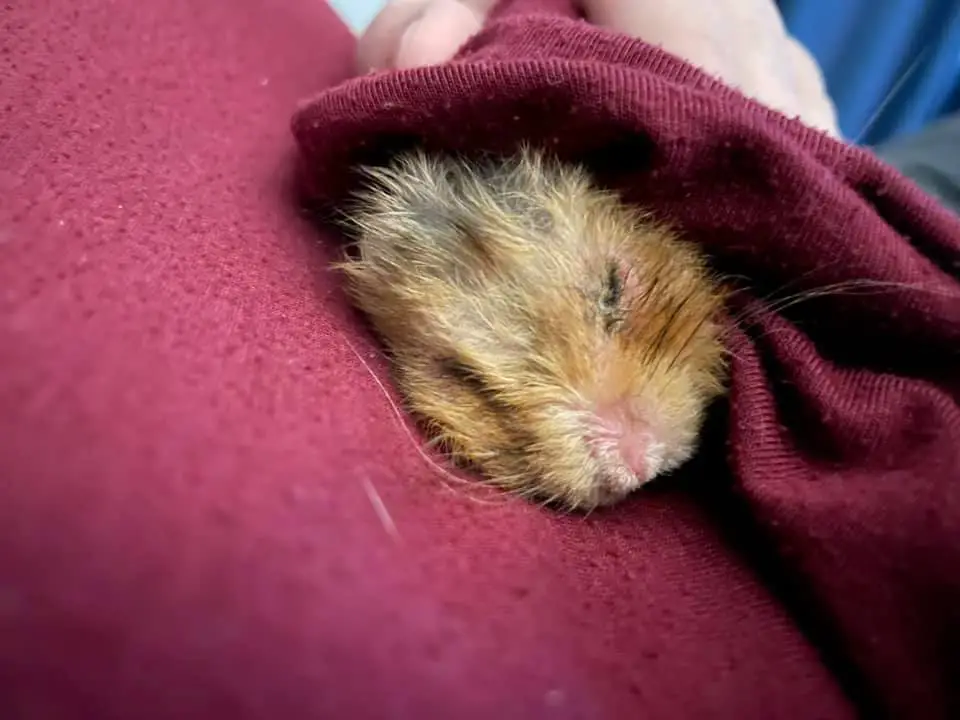
Allergies in hamsters can cause nosebleeds by triggering an inflammatory response in the nasal passages, leading to swelling and irritation that can rupture blood vessels and result in bleeding.
Hamsters can suffer from allergies, just like any other animal. The most common signs of an allergy in a hamster are itchiness, nosebleeds, excessive grooming, and hair loss.
If your hamster is showing any of these symptoms, it’s important to take them to the vet for a diagnosis.
Allergies can be caused by a number of things, including dust, pollen, and certain foods.
Once the underlying cause is determined, it can usually be treated with medication or a change in diet. With the proper care, your hamster can live a long and happy life says TheStudentRoom.
6. Neoplasia (type of cancer)
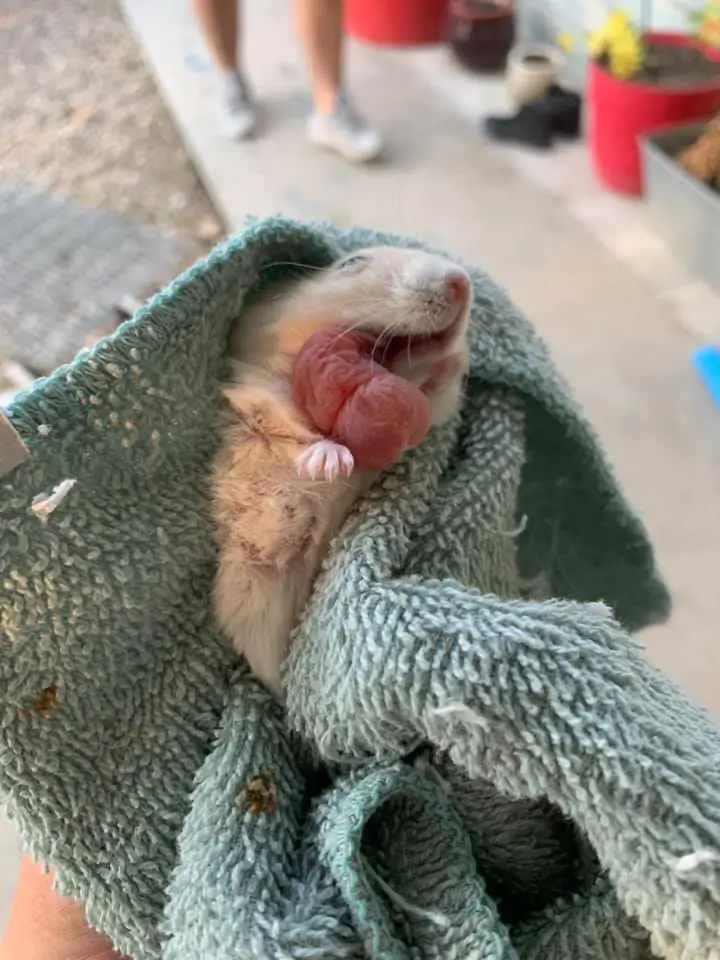
Neoplasia in hamsters, a type of cancer, can cause nosebleeds by leading to abnormal growths in the nasal passages that may erode blood vessels and cause bleeding.
In fact, neoplasia is the formation of new tissue. This can be either benign, in which case the neoplasm does not spread and is not cancerous, or malignant, in which case the neoplasm does spread and is cancerous. Hamsters can develop both benign and malignant neoplasms.
However, most neoplasms in hamsters are benign. The most common type of neoplasm in hamsters is an adenoma, which is a tumor of the glandular tissues. Hamsters can also develop other types of tumors, such as fibromas, osteomas, and lipomas. While most neoplasms are benign, some can be malignant.
The most common type of malignant neoplasm in hamsters is lymphoma, which is a cancer of the lymphatic system. Other types of malignant neoplasms include sarcomas and leukemias. While neoplasms are relatively common in hamsters, they are usually not life-threatening says HamsterCentral.
What To Do If Your Hamster’s Nose Is Bleeding
If your hamster’s nose is bleeding, it’s crucial to apply gentle pressure to the area with a clean cloth or cotton ball, and if necessary, use a tiny bit of flour to help stop the bleeding.
Identifying the Problem
As a veterinarian, I often see small pets like hamsters experience nosebleeds due to various reasons. It could be due to dry or cold weather, an injury, a fight with another hamster, an allergic reaction, a tumor, or blood clotting issues.
It’s important to identify any sudden changes in your hamster’s behavior or physical condition, such as frequent falls or a firm belly, which could be signs of underlying health issues.
Immediate Steps
During a nosebleed, you should first aim to stop the bleeding. Applying gentle pressure to the bleeding area with a clean cloth or cotton ball can help.
In some cases, a tiny bit of flour can also aid in clotting and stopping the bleeding. Remember, hamsters have a small blood volume, so it’s vital to control the bleeding quickly.
Vet Intervention
If your hamster continues to bleed, or if the nosebleed is accompanied by other worrying symptoms like frequent falls, it’s time to visit a vet. The vet will be able to diagnose the cause of the bleeding and prescribe appropriate treatment.
Even if the bleeding stops and your hamster appears to recover, it’s still recommended to consult a vet to rule out any internal injuries or conditions.
Preventing Future Bleeds
Prevention is always better than cure. Ensure that your hamster’s habitat is safe and free from objects that could cause injury.
Be mindful of the bedding material you use; some materials like pine or cedar can cause irritation. Switching to aspen, CareFresh, or corncob might be less likely to irritate your hamster’s nose. Also, be aware of your hamster’s health and behavior to catch any potential issues early.
Can I Treat My Hamster’s Nosebleed at Home?
While you can take initial steps to control your hamster’s nosebleed at home, it’s crucial to consult a vet for proper diagnosis and treatment to ensure the well-being of your pet.
As a veterinarian, I’ve encountered several instances where pet owners have tried to manage their hamster’s nosebleeds at home.
While you can certainly take immediate action to control the bleeding – using a clean cloth or cotton ball and applying gentle pressure to the nose, or even using a tiny bit of flour to aid clotting – these are only temporary measures.
It’s important to understand that nosebleeds in hamsters can be symptomatic of underlying health issues, ranging from allergies and injuries to more serious conditions like tumors.
Therefore, while initial at-home care is important, it’s equally crucial to get your hamster examined by a vet. The vet can accurately diagnose the cause of the nosebleed, assess the overall health of your hamster, and prescribe appropriate treatment.
Ignoring or delaying professional medical attention could potentially worsen your hamster’s condition. As a vet, I strongly recommend consulting with a professional if your hamster experiences a nosebleed. It’s always better to be safe than sorry when it comes to the health of our furry friends.
Why Does My Hamster Have a Red Dot On His Nose?
A red dot on a hamster’s nose could be a local inflammatory reaction, allergic reaction, or injury.
If the red dot on your hamster’s nose is accompanied by other symptoms such as sneezing, lethargy, or hair loss, you should take your hamster to the vet.
In one study, hamsters were exposed to a foreign substance in order to study the inflammatory reaction. The results showed that the hamsters’ noses became red and swollen, and they began to produce more mucus. This reaction is similar to what occurs in humans when we have an allergic reaction.
The study found that the inflammatory reaction is caused by special cells in the hamsters’ noses, which are activated by foreign substances. These cells release chemicals that cause swelling and other symptoms. While this reaction is usually harmless, it can be very uncomfortable for the hamster.
FAQs
Q: Can hamsters get nosebleeds?
A: Yes, hamsters can get nosebleeds. Nosebleeds in hamsters can be caused by a variety of factors, including respiratory infections, injuries, or even tumors.
Q: Are nosebleeds common in hamsters?
A: Nosebleeds are not very common in hamsters, but they can occur. If you notice your hamster’s nose bleeding, it’s important to seek veterinary attention to determine the underlying cause.
Q: How do I stop my hamster’s nose from bleeding?
A: If your hamster’s nose is bleeding, you can try to gently apply pressure to the nostril with a clean cloth or tissue to help stop the bleeding. However, it’s still important to consult a veterinarian for proper treatment.
Q: Should I be concerned if my hamster’s nose is bleeding?
A: Yes, you should be concerned if your hamster’s nose is bleeding. Nosebleeds can be a sign of underlying health issues, so it’s important to have your hamster checked by a vet to determine the cause and provide appropriate treatment.
Q: How do I know if my hamster’s nosebleed is serious?
A: If your hamster’s nosebleed is accompanied by other symptoms such as difficulty breathing, loss of appetite, or lethargy, it may indicate a more serious issue. It’s important to consult a vet for a proper diagnosis and treatment.
Q: Can a hamster’s nosebleed be a sign of a tumor?
A: Yes, a nosebleed in a hamster can be a sign of a tumor. Tumors in the nasal area can cause bleeding from the nose. It’s important to have your hamster examined by a veterinarian to determine the cause and provide appropriate treatment.
Conclusion and final thoughts
In conclusion, nose bleeding in hamsters is a common occurrence and can have various underlying causes.
It is important to observe your hamster closely and seek veterinary care if the bleeding persists or is accompanied by other concerning symptoms.
Prevention measures such as providing a clean and safe environment, handling your hamster gently, and avoiding sharp objects in their cage can help prevent nosebleeds.




